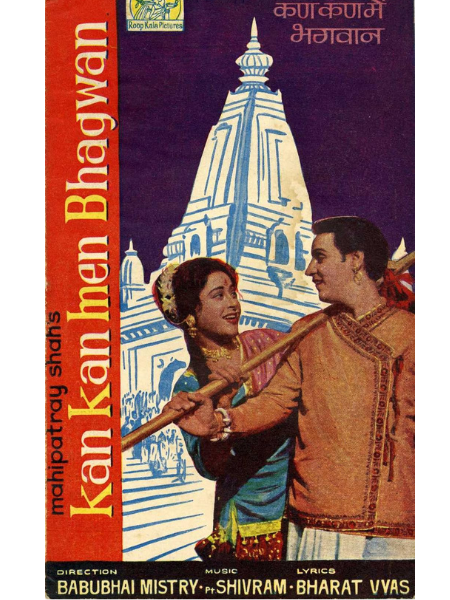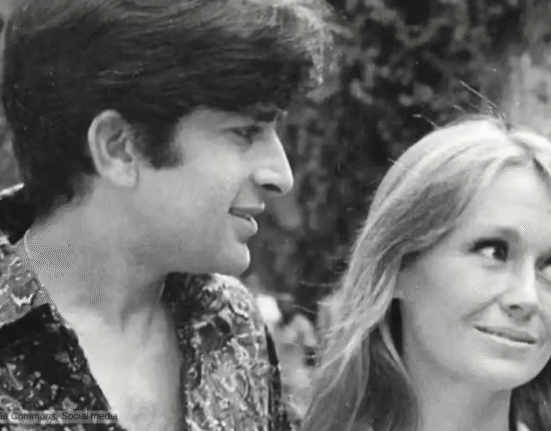One of the most daring innovators, iconic special effects artists, and art directors of Indian cinema, Babubhai Mistry, was unafraid of trying new tricks. He was nicknamed ‘Kaala Dhaga’ for his innovation of using black thread to create an invisible man.
Known as the ‘Master of Special Effects’ in Indian cinema, he was a true innovator who brought the magic of visual effects to the silver screen at a time when technology was rudimentary. His techniques were a blend of creativity, resourcefulness, and a deep understanding of the filmmaking process.
The 90s generation knows him through his work as a special effects artist, specifically on BR Chopra’s epic “Mahabharat” and fantasy movies like Jeetendra’s “Hatim Tai (1990)” and “Sheshnag (1990),” but his career spanned from 1933 to 1991, during which he directed over 63 films, most of which were based on Hindu mythology.
Early Life and Career
Babubhai Mistry, born Abdus Samad on September 5, 1918, in Surat, Gujarat, was a visionary director, special effects artist, and cameraman in the Indian film industry. renowned for his pioneering work in special effects.

Mistry lost his father at the age of 14, thrusting young Babu Bhai into the role of the family’s provider. His quest for employment led him to Mumbai, where his uncle, an art director in the film industry, helped him secure a job. Babu Bhai started his film career by working in various capacities, from spotboy to assisting in camera or working manually on sets. Soon he finds his niche as a cameraman and his knack for trick photography.
He also worked on many films for Wadia Movietone as an art director and also worked with Vijay Bhatt at Basant Pictures as a special effects director. Mistry’s journey into special effects began with his role as a trick photographer. His first significant contribution was in the film Khwab Ki Duniya (1937), where he used black threads to create the illusion of objects moving on their own. This technique was so novel and effective that it earned him the nickname ‘Kala Dhaga’ or ‘black thread.’
One of Mistry’s most notable challenges was to depict the invisible man on screen. To achieve this, he employed ingenious methods using dim lighting and a black backdrop, manipulating everyday objects with black threads to give the illusion of them being moved by an unseen force. This groundbreaking work in the film ‘Khwab Ki Duniya’ set a precedent for special effects in Indian cinema.
Kaala Dhaga – Babubhai Mistry
Babubhai Mistry soon transitioned to directing, co-directing his first two films, Wadia Movietone’s “Muqabala (1942)” and “Mauj (1943),” both featuring the iconic Fearless Nadia. Mistry went on to direct films like Ji Haan (1945), Nav Durga (1953), Tilottama (1954), Shree Krishna Bhakti (1955), Sati Naag Kanya (1955), Maya Bazaar (1956), Samrat Chandragupt (1958), Bedard Zamana Kya Jane (1959), Chandrasena (1959), Maya Machhendra (1960), and many more.






One of his other significant films was the 1959 “Veer Ghatotkach,” where, in a scene, the demon was holding a man in his mighty fist, a scene that was cleverly executed by Mistry. Some of his films as an art director include Tigress, Mala the Mighty, Circuswale, Husn Ka Chor, and Hatim Tai (1965).
Mistry gave Dara Singh his big break with the 1962 film “King Kong” and was also responsible for introducing the musical composing duos of Kalyanji-Anandji in “Samrat Chandragupt (1958)” and Lakshmikant-Pyarelal in “Parasmani (1963),” as well as giving musical director Ramlal his start in “Maya Machindra.”
The King Of Mythological Films
Babubhai Mistry’s directorial ventures often drew from religious and epic texts, bringing to life stories from the Puranas and other ancient scriptures. His other notable works include “Sampoorna Ramayana (1961),” “Parasmani (1963),” and “Mahabharat (1965),” and he also contributed to the television epic series “Ramayan (1987-1988)” and was in charge of special effects for B.R. Chopra’s “Mahabharat.
Mistry also brought South Indian actresses to entertain Hindi film audiences when he cast Padmini Priyadashini in “Madari (1959),” Girija in “Chandrasena (1959),” Geetanjali in “Parasmani (1963), and Swarna Kumari in Sangram (1965).



Other Work
Mistry’s expertise extended beyond trick photography. He was a visionary who understood the camera’s potential to tell stories in ways previously unimagined. His handling of the camera and innovative use of visual effects played a crucial role in advancing film techniques in the Indian film industry.
Some of the iconic mainstream films where he gave special effects include “Prem Pujari (1970),” “Bhai Ho To Aisa (1972),” “Jugnu (1973),” “Roti (1974),” “Warrant (1975),” “Nagin (1976),” “Charas (1976),” “Azaad (1978),” “Nastik (1983),” “Salma (1985),” “Shatru (1986),” and many more.
Some of his later works as a director include Bhagwan Parshuram (1970), Daku Man Singh (1971), Saat Sawal (1971), Hanuman Vijay (1974), Alakh Niranjan (1975), Maya Maschindra (1975), Vir Mangdavalo (1976), Amar Suhagin (1978), Har Har Gange (1979), Sant, Ravidas Ki Amar Kahani (1983), and Kalyug Aur Ramayan (1987), among others.
Legacy
Babubhai Mistry’s contributions to Indian cinema were recognized with several accolades, including the Lifetime Achievement Award at the Zee Cine Awards in 1999 and the Kodak Trophy for Technical Excellence at the MAMI festival in 2005.
Babubhai Mistry passed away on December 20, 2010, but his work remains a testament to his talent and dedication to the art of filmmaking.
The influence of Babubhai Mistry’s work is evident in the modern Indian film industry’s approach to special effects and fantasy storytelling. Today’s filmmakers have access to advanced technology, but the foundational techniques and the spirit of innovation that Mistry brought to the field continue to inform and shape their work.
Babubhai Mistry on IMDB









